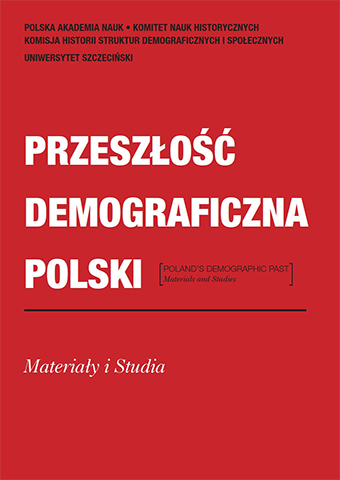







| Authors: |
Marek Jerzy
Minakowski
Dr Minakowski Publikacje Elektroniczne |
| Keywords: | massive genealogy cultural capital social capital history of the intelligentsia |
| Data publikacji całości: | 2016 |
| Page range: | 26 (63-88) |
| 1. | Bourdieu, Pierre. „The Forms of Capital”. W: Handbook of Theory and Research for Sociology of Education, red. John C. Richardson, 117–142. New York–Westport, CT–London: Greenwood Press, 1986. |
| 2. | Brin, Siergiey, Page, Larry. „The Anatomy of a Large-scale Hypertetual Web Search Engine”. Computer Networks and ISDN Systems 30 (1998): 107–117. |
| 3. | Dworzaczek, Włodzimierz. Genealogia. Warszawa: PWN, 1959. |
| 4. | Eyal, Gil, Iván Szelényi, Eleanor Townsley. Making Capitalism Without Capitalists: The New Ruling Elites in Eastern Europe. London–New York: Verso, 1998. |
| 5. | Geneteka. Serwis internetowy prowadzony przez Polskie Towarzystwo Genealogiczne. http://geneteka.genealodzy.pl. |
| 6. | Główny Urząd Statystyczny Rzeczypospolitej Polskiej. Mały rocznik statystyczny 1939. Warszawa: GUS, 1939. |
| 7. | Judycka, Agata, Zbigniew Judycki, red. Indeks haseł Polskiego Słownika Biograficznego. Lublin: Wydawnictwo Czelej, 1999. |
| 8. | Konarski, Szymon. Kanoniczki warszawskie 24 IV 1744 – 13 VIII 1944. Paryż, 1952. |
| 9. | Minakowski, Marek J. „Gęstość sieci koligacji w parafii Kampinos w XIX wieku”. Przeszłość Demograficzna Polski (2014), 35: 65–74. |
| 10. | Polski słownik biograficzny. T. 1–50. Kraków: PAU, PAN, 1935–2016. |
| 11. | Poznan Project. Serwis internetowy prowadzony przez Łukasza Bieleckiego i Macieja Głowiaka. http://poznan-project.psnc.pl. |
| 12. | Prinke, Rafał T. Poradnik genealoga amatora. Poznań: Zysk i S-ka, 2007. |
| 13. | Prinke, Rafał T., Andrzej Sikorski. Królewska krew. Polscy potomkowie Piastów i innych dynastii panujących. Poznań: Zysk i S-ka, 1997. |
| 14. | Portal genealogów Lubelszczyzny. http://regestry.lubgens.eu. |
| 15. | Smoczyński, Rafał, Tomasz Zarycki. Totem inteligencki. Arystokracja, szlachta i ziemiaństwo w polskiej przestrzeni społecznej. Warszawa: Wydawnictwo Naukowe Scholar, 2017. |
| 16. | Tyszka, Andrzej T., oprac. Nekrologi „Kuriera Warszawskiego” 1821–1939. T. 1–4. Warszawa: Biblioteka Publiczna m.st. Warszawy, 2001–2012. |
| 17. | Wielka genealogia Minakowskiego. http://wielcy.pl i http://www.sejm-wielki.pl. |
| 18. | Zarycki, Tomasz. „Kapitał kulturowy – założenia i perspektywy zastosowań teorii Pierre’a Bourdieu”. Psychologia Społeczna 4 (2009), 1–2: 12–25. |
| 19. | Zarycki, Tomasz, Tomasz Warczok. „Hegemonia inteligencka: kapitał kulturowy we współczesnym polu władzy – perspektywa «długiego trwania»”. Kultura i Społeczeństwo 4 (2014): 27–49. |
| 20. | Ziółkowski, Marek. „Kapitały społeczny, kulturowy i materialny i ich wzajemne konwersje we współczesnym społeczeństwie polskim”. Studia Edukacyjne 22 (2012): 7–27. |